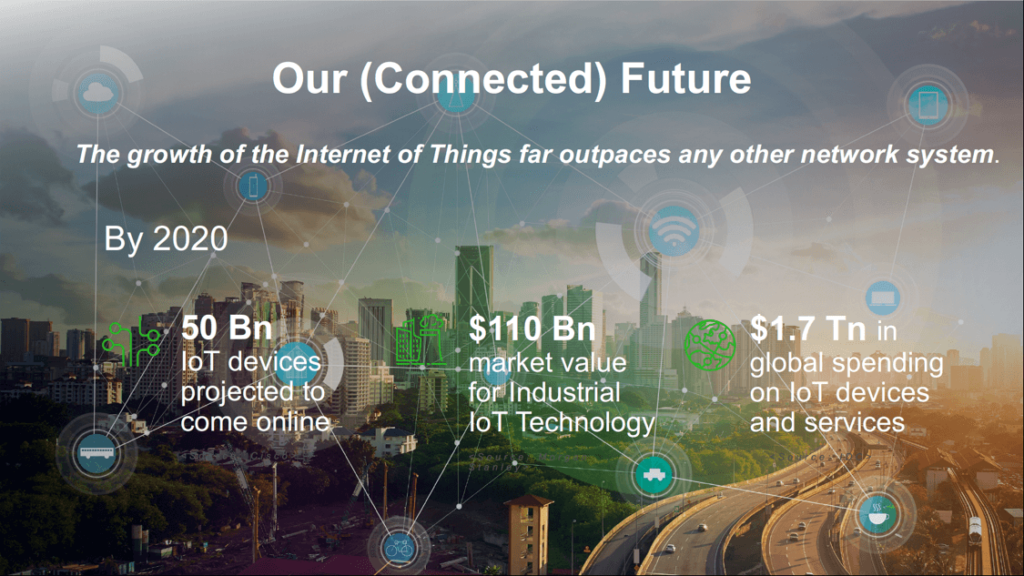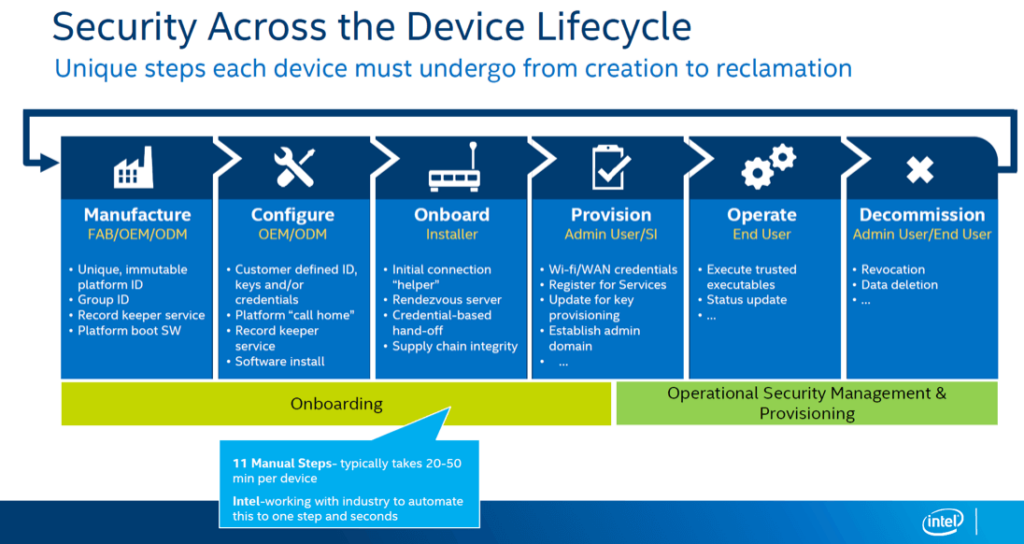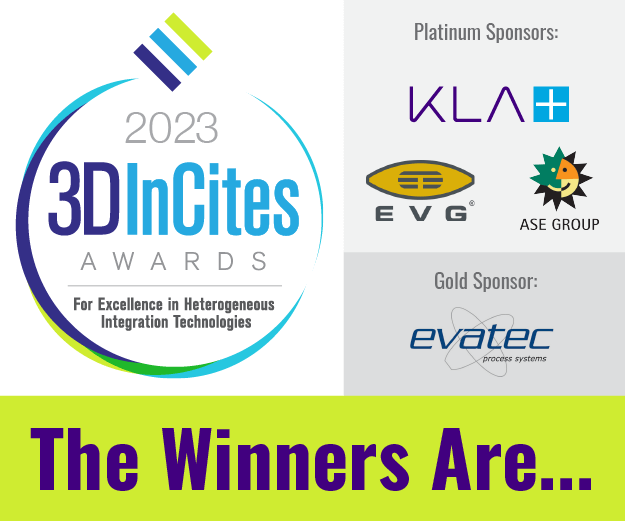At the end of April, I attended the Internet of Things (IoT) Developers Conference at the Santa Clara Convention Center. Because our semiconductor industry is expecting that IoT applications will significantly contribute to revenue growth, I wanted to get the latest about: If, how, when, why and for which applications IoT designs will be introduced and ramped into high-volume production.
General impressions
“If” is easy to answer right up front: There is no doubt that IoT will become a significant revenue source for semiconductor vendors. This conference confirmed that many creative engineers in large, medium, and smaller companies are pursuing a wide range of solutions for IoT edge nodes, gateways, and data centers. In addition to these “point solutions”, the conference showed that several strong IoT consortia have been formed and are working hard to expand the IoT ecosystem. Their influential and innovative members are focused on defining security measures and communication standards, as well as versatile hardware platforms and software solutions for a broad range of applications. The many exhibitors on the conference floor explained how their IoT solutions have and will enable productivity gains. Lots of powerful messages that investors can’t ignore.
By “how” I mean the actual implementation style companies are choosing. Due to the diversity of targeted applications, the need for heterogeneous functions in the edge nodes and the – compared to smartphones – much lower volumes per design, I don’t see “IoT-SoCs” emerging soon. Developers are combining the functions needed as individual ICs, together with passives, on a PCB. I got the impression that performance per Watt requirements will encourage the use of multi-die fan out wafer-level packages (FO-WLP) and interposer-based (2.5D) designs in the next few years. Likewise, the many different computing tasks data centers need to perform will trigger new computer architectures, e.g. FPGAs, as faster and lower-power co-processors, to off-load the Von Neumann CPUs.
“When?” may be misleading, because the simple answer is NOW. Every wafer fab and many other industrial applications utilize the power of Intranet of Things for several years already and want to expand to internet solutions to allow suppliers and customer to share the benefits of these integrated industrial systems. Computers analyze the data generated by IoT networks and issue actionable commands when needed to keep quality levels high, react quickly to developing problems, manage inventory levels, minimize cost and other parameters.
During your next flight, you can relax in your seat, because you’ll know that several hundred sensors watch every one of the jet’s engines for proper performance. The powerful onboard computers assure efficient operation and, if wear out becomes visible, suggest preventive maintenance.
If you are driving a late model car, you may have been surprised (or annoyed) by all kinds of diagnostics info your car offers you. Equally common today, your car may trigger an email from your service department, asking you to schedule a service to avoid bigger car problems down the road.
As soon as you hear about current IoT applications and recognize the benefits these solutions offer, the question “why?” becomes a moot point.
As to “which applications?” are driving (or will be driving) high-volume production and contribute significantly to semiconductor revenues, the developer conference showed that we still need to be patient and keep looking for at least one, most likely multiple “killer applications” to reach IoT revenues similar to those generated by smartphones. In contrast to these mobile devices, where application processor, graphics engine, modems, memories and other important building blocks are now standardized, in IoT applications customer-specific and application-specific solutions are likely to dominate and limit volumes per design for some time. On the other side, the many likely medium and lower volume IoT applications will generate, in total, significant revenues. Again, a plug for multi-die ICs: Their modularity (= flexibility) and better performance per Watt, will encourage their use in edge nodes, gateways and data centers.
Specific presentations
On Wednesday morning the conference chair, Markus Levy, welcomed the attendees in the fully packed meeting room. Keynoters from Mocana, Intel, Deepscale, and IBM did a great job of sharing their companies’ key capabilities and IoT visions.
Bill Diotte, Mocana’s CEO, highlighted the IoT opportunity’s size and the importance of trust and security when designing and operating edge nodes, gateways and data centers. He showed Mocana’s developer kit and highlighted the importance of alliances and the need for a comprehensive ecosystem to offer trusted IoT solutions to a broad range of users.

Intel’s Jennifer Gilburg focused on “onboarding”, a term she described very well as the integration of a new IoT device into a network. She showed very clearly that thorough onboarding and reclaiming of devices are important and complex processes in the context of a network.

After a quick break, Forrest Iandola, Deep Scale’s CEO, introduced his very Berkeley-centric team and their focus on perception systems for autonomous driving. He explained well how they use deep learning algorithms for object recognition. His talk also highlighted the importance of open-source research to accelerate progress and encourage broad adoption of new technologies. Iandola emphasized that his currently still small team is already working with OEMs and suppliers to the automotive industry on object recognition to ensure safe driving. He couldn’t resist the opportunity to show a slide with his team’s current openings. Based on the audience’s reaction, I dare to project that his “I am hiring” message produced good results.
IBM’s VP of Cognitive Systems, Sumit Gupta, outlined how cognitive systems and machine learning will perform essential roles in applications to off-load humans, increase security, monitor our bodies’ vital functions, manage the flow of products, guide traffic and reliably manages many more tasks. Gupta pointed out the capabilities of IBM’s Blue Horizon Decentralized Autonomous Edge Computing program and the benefits of joining it.
On Wednesday afternoon, the developer forum offered two tracks, called “IoT Developer Strategies” and “Deus Ex Machina”. These breakout sessions allowed the presenters to describe their IoT solutions in greater depth. Also, the focused topic and much smaller audience, compared to the keynotes, allowed questions from the audience.
All of Thursday this conference was running three tracks, focusing on a range of topics, like ideas and developments in IoT security, connectivity, application development and a session labeled Living on the Edge.
If you want to know more about the presenters, their companies and the topics covered, please go to The IoT Developer Forum website.
Bottom line: Lots of progress in building the IoT ecosystem, and in developing point solutions for edge nodes, gateways and compute centers. IoT is no longer a buzz word but is now associated with real revenue and profit opportunities now. ~ Herb























